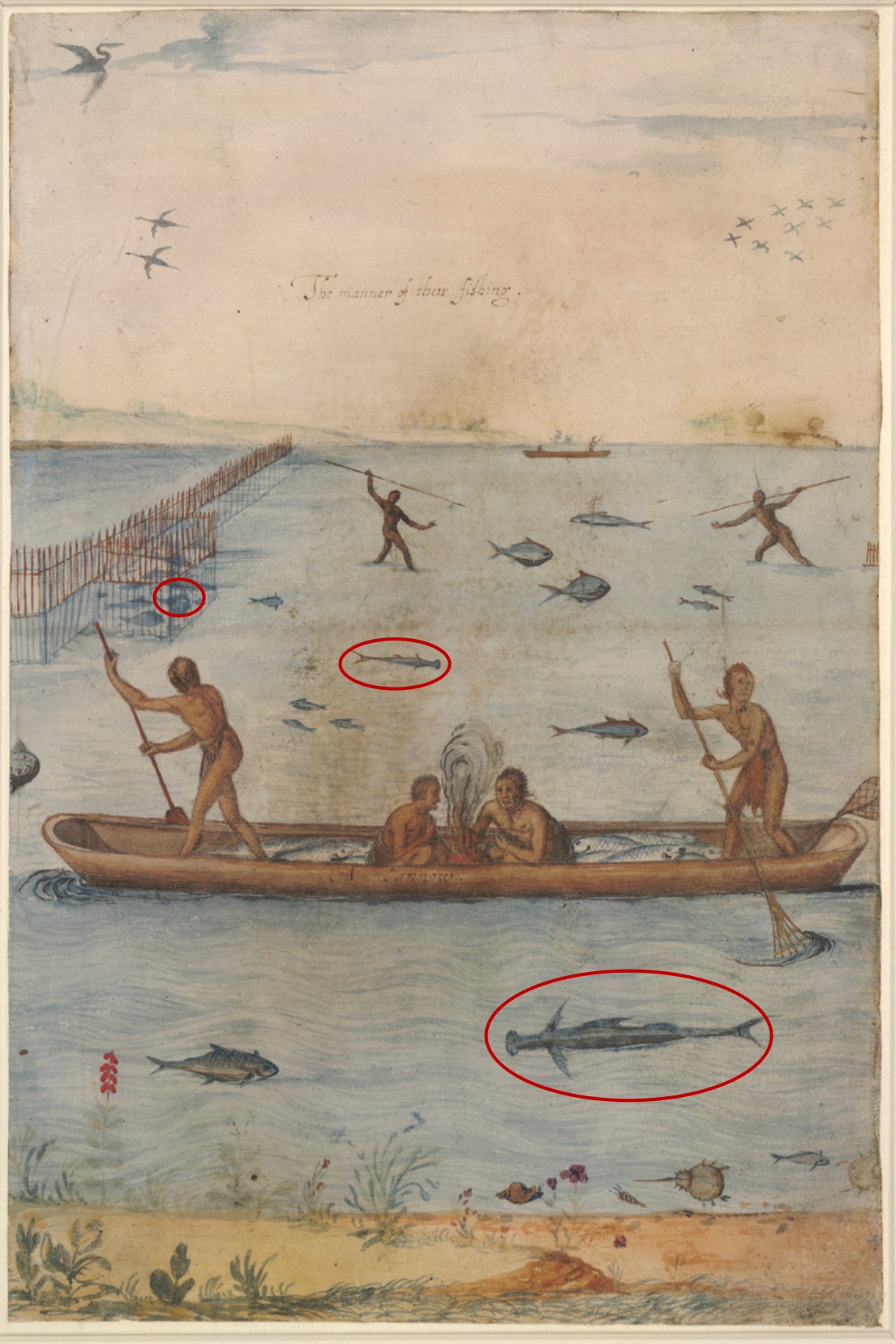America’s Second-Largest Estuary is a Lagoon Full of Sharks

From Southern Fried Science
It’s a bit of a cliché to reference the movie Jaws when talking about sharks, but I’m going to do it anyway. There’s a pivotal scene where the giant White Shark is spotted moving into a salt pond, where it proceeds to terrorize the children of protagonist Chief Martin Brody. While no sharks are in the business of regularly eating humans, at least part of this scene is realistic: sharks do make use of inshore, estuarine environments like lagoons, bays, and the lower portions of rivers. Despite the fact that sharks are generally thought to stay out in the ocean, many species are not only comfortable entering estuaries, they actually depend on them. Some species make extensive use of estuaries as shelter from predators and/or a place to grab a bite themselves.
So it should come as no surprise that North Carolina’s Pamlico Sound, part of the Albemarle-Pamlico estuary (the second-largest in the continental U.S. after Chesapeake Bay) offers a lot of potential real estate for sharks. Unlike Chesapeake Bay, Pamlico Sound is a lagoon, which means it’s wide, shallow, mostly water, and connected to the ocean via fairly small inlets between barrier islands. It straddles the transition zone marked by Cape Hatteras between temperate and subtropical marine ecosystems, and the amount of seagrass growth there is second only to Florida in sheer area. This estuary is already well-known for its importance as habitat for such varied (as well as tasty and/or fun to catch) species as Blue Crab, Penaeid shrimps, Flounder, and Red Drum. However, the sharks of Pamlico Sound have mostly been known by scattered reports and sightings from fishermen. That is, until my co-authors and I were able to look through a nice data set to get an idea of which sharks are present in the sound and where in the estuary they might like to be.
Article with link to the study data continues here





